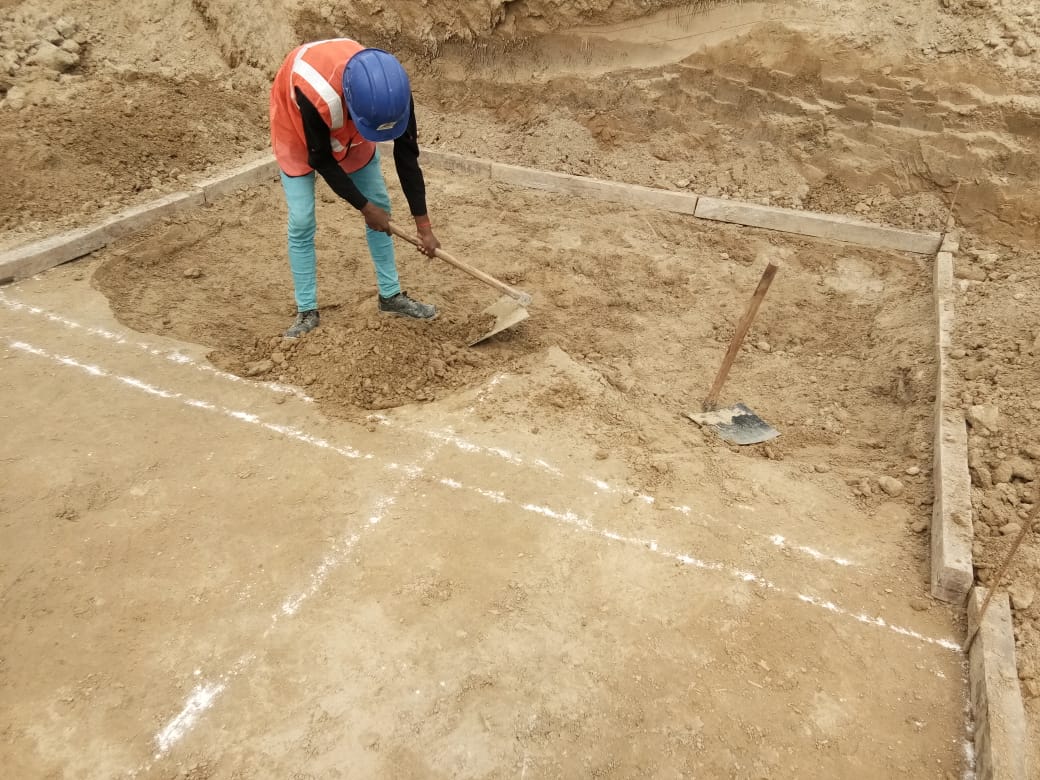The penetration test for bitumen is a laboratory method for grading bitumen based on its hardness. In this test, the amount of penetrating a specific needle into the bitumen is measured.
More than 85% of bitumen is used in road construction. Weather condition affects on bitumen binder. In cold weather, bitumen becomes hard, and the possibility of cracking increases. On the other hand, hot weather causes bitumen becomes soft and sticky. It’s vital to consider how the penetration test for bitumen assists in addressing these issues.
Both situations are not acceptable as a result of civil engineers using penetration tests.
Table of contents
What is the Penetration Test of Bitumen?
The penetration test for bitumen is a laboratory method for grading bitumen based on its hardness. In this test, the amount of penetrating a specific needle into the bitumen is measured. Notably, the penetration test for bitumen plays a crucial role in grading consistency.
This value is reported in a tenth of a millimetre or Deci-millimeter (DMM) as a penetration value. The penetration test can be used for refinery bitumen, emulsion bitumen, and oxidized bitumen. Based on this test bitumen is classified into penetration grades of 20/30, 30/40, 40/50, 50/60, 60/70, and 80/100.
This test can measure the penetration value in the range of 20 to 300 dcmm. It can recognize the bitumen consistency and stability of bitumen when performing a penetration test for bitumen.
Let’s see this test history and application.
The Bitumen Penetration Test History
The first uses of the penetration test, date back to the early 19th century. Before that, the hardness of bitumen is measured based on the Chewing test. It was a completely experienced test. Through that, an engineer chews a moderate-temperature bitumen sample. Then reports the hardness of bitumen according to the difficulty of chewing. Because of the chewing test’s inaccuracy, the penetration test for bitumen was introduced to the industry.
An overview of the Bitumen Penetration test Importance
More than 85% of bitumen is used in road construction. Weather condition affects on bitumen binder. In cold weather, bitumen becomes hard, and the possibility of cracking increases. On the other hand, hot weather causes bitumen becomes soft and sticky. Both situations are not acceptable as a result of civil engineers using penetration tests to determine the most appropriate bitumen for various conditions.
Bitumen with high penetration values is suitable for cold weather. Because it does not harden and crack when exposed to low temperatures. On other hand, bitumen with smaller penetration values is suitable for hot weather. Because high temperatures can not soften it. Most workable penetration bitumens are penetration grades 60/70 and 80/100. Penetration grade 60/70 can apply to road construction in warm weather and 80/100 is suitable for cold weather.
Bitumen penetration grade 80/100 means that the needle penetrates into the bitumen in the range of 80 to 100 decimeters.
How Is the Penetration Test of Bitumen Performed?
In the following, you can familiarise yourself with the apparatus and the procedure of the test based on ASTM D5. Before that watch the below video by Infinity Galaxy which introduces the penetration test for bitumen.
Apparatus
- Penetrometer
- Container
- Water bath
- Stopwatch
- Thermometer
Procedure
In the first step, bitumen should be heated up until it becomes liquid. Bitumen should not be heated in a temperature range above 90-100 degrees Celsius otherwise it will burn. While the temperature rises, stir the bitumen to make sure it is uniform. Bitumen should also be free of water and air bubbles. This process is vital for the penetration test of bitumen.
In the next step, pour the melted bitumen into the container and let it cool at room temperature.
After that put the bitumen container in the water bath with a constant temperature of 25 degrees Celsius and let the sample reach the same temperature, ensuring consistent results for the penetration test for bitumen.
Then place the container under the penetrometer. Move down the needle just above the bitumen surface.
Thereafter, apply the needle which has a 100gr load just for 5 seconds. Repeat the test 3 times and write down the results each time. The needle tip in each repetition should be apart 10mm from the previous measurements.
Report the mean value as the penetration value of the bitumen sample. The following picture is other important bitumen tests in road construction:
Infographics – 10 Major bitumen tests
Key Takeaways
- The Penetration Test for Bitumen assesses its hardness by measuring the depth a needle penetrates into the material.
- This test helps engineers select appropriate bitumen grades for varying weather conditions, ensuring durability in road construction.
- Penetration values categorize bitumen from soft (80/100) to hard (20/30), influencing its application in hot or cold climates.
- Conducting the test involves heating bitumen, cooling it in a controlled environment, and measuring penetration under specific conditions.
- The test has evolved from the unreliable chewing method to a more precise laboratory procedure recognized since the 19th century.






One thought on “Penetration Test for Bitumen – Significance and Procedure”
Comments are closed.